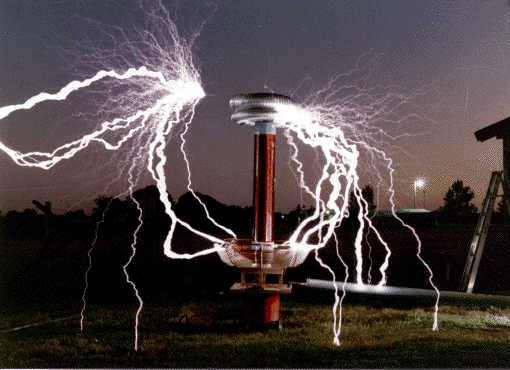Electricity
M. Rocha
Physics 10
Electrostatics
Electricity at rest
Electrical Forces
There are two types of electrical charge:
Positive and Negative
Like charges repel, opposite charges attract

Origin of Charge
Charge comes from Electrons and Protons

Proton charge = e
Electron charge = -e
e is called the elementary charge
Chekpoint
What is the total charge of an object with 6 electrons and 5 protons?
Total charge = -6 e + 5 e = -1 e
Charge is quantized
The elementary charge e is the smallest unit of charge
No smaller units of charge have ever been observed, all charged objects have a charge that is a whole-number multiple of e, the smallest quantum of charge
quarks have never been observed alone, they are always in a combination so that their charge sums to e, -e or zero
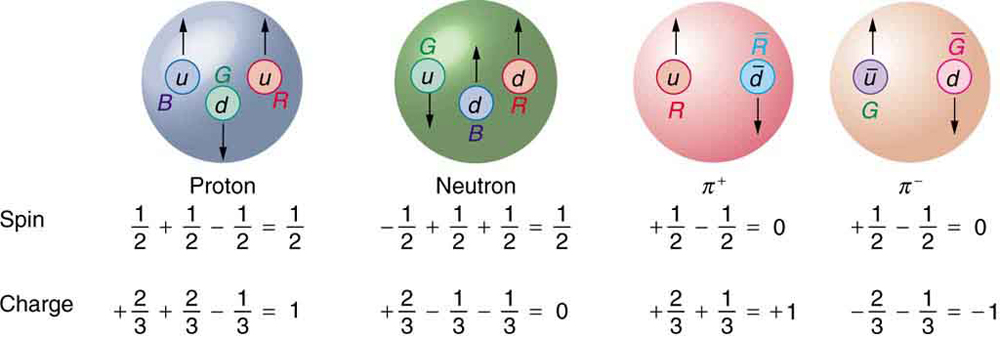

Charging by Friction/Contact
Electrons move easily, so an object can become charged by rubbing electrons off an object’s surface


Chekpoint
When you rub a balloon against your hair the balloon gets electrically charged, this is because
Electrons are released from the fur and stick on the balloon
Human Electroscope


Conservation of Charge
Charge cannot be created nor destroyed.
Objects become charged by transfer of charges

Conductors and Insulators
Conductors: Materials in which electrons flow freely, such as metals
Insulators: Materials in which electrons do not move easily, such as plastic and wood
Semiconductors: Materials that can act as conductors or insulators under different conditions, such as silicon

Lightning
Air is an insulator but at high voltages it can conduct electricity as lightning
Lightning
Air is an insulator but at high voltages it can conduct electricity as lightning

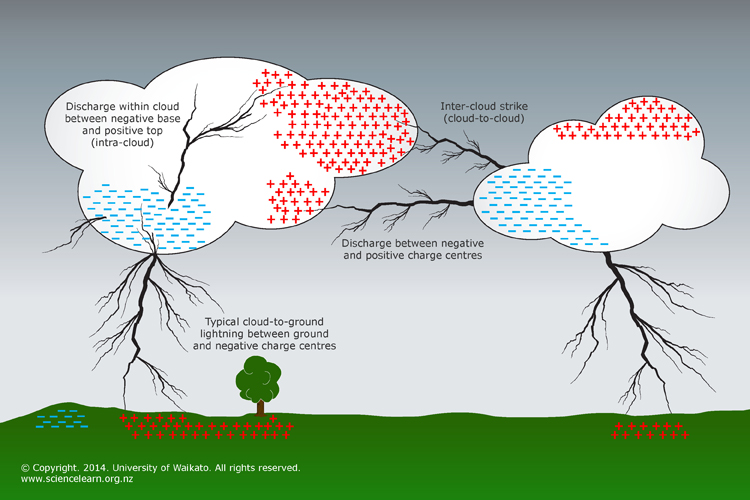

Coulomb's Law
Electric force acts at a distance just like Gravity

And also like Gravity the magnitude of the Electric Force is proportional to the product of charge and inversely proportional to the square of the distance
Coulomb's Law
Electric force acts at a distance just like Gravity
And also like Gravity the magnitude of the Electric Force is proportional to the product of charge and inversely proportional to the square of the distance

Coulomb's Law
The SI unit of charge is the coulomb (C)
A charge of 1 C is the charge of 6.24 × 10^18 e
e = 1.6 × 10^-19 C
k = 9.0 × 10^9 N·m^2/C^2
Chekpoint
What is the force between the following two charged particles if they are separated by 3 meter?
Particle 1 with q_1 = 1 x 10^-5 C , and
Particle 2 with q_2 = -1 x 10^-4 C
-1 N
k = 9.0 × 10^9 N·m^2/C^2
Electric Field Lines
Electric field lines indicate the direction of electric force if a positive charge was placed in the electric field



Electric Potential Energy
Potential energy associated with electric force, similar to potential energy associated with gravitational force

Electric Potential
Electric potential is potential energy per charge
Voltage is a measure of electric potential
Electric Potential Energy = Voltage × Charge
Electric Potential
Electric potential is potential energy per charge
Voltage is a measure of electric potential

Yes! A charged ballon can generate high electric potential (voltage), but it has small potential energy because of the small amount of charge, thus is safe
Electric Potential Energy = Voltage × Charge
Charging by Induction
If a charged object is brought near a conducting surface, even without physical contact, electrons will move in the conducting surface


Charging by Induction
If a charged object is brought near a conducting surface, even without physical contact, electrons will move in the conducting surface

Charge Polarization
Charge polarization occurs when the positions of the electrons and protons in an atom are skewed

Charge Polarization
Charge polarization occurs when the positions of the electrons and protons in an atom are skewed

Electric Current
Electricity in motion
Electric Current
Just like water flows whenever there is a altitude difference, electricity flows whenever there is a voltage difference
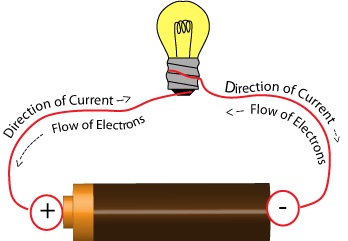
Electric
Potential Difference
(voltage)
Gravitational Potential Difference
Checkpoint 1
Select the correct statements about Fig. 1 vs. Fig. 2
Fig. 1
100 m
12 V
100 m
12 V
Fig. 2
A) The electrical/gravitational potential in 2 is greater than in 1
B) The electrical/gravitational potential is the same in 1 and 2
C) The electrical/gravitational potential energy is greater in 2
Electric Current

Electric current is measured in amperes or amps (A)
An ampere is the flow of
1 coulomb of charge per second
1 coulomb = 6.24 x 10^18 e
= 6.24 billion billion electrons
Voltage Sources
A sustained current requires a suitable pumping device to provide a difference in electric potential (voltage)


Voltage Sources
A sustained current requires a suitable pumping device to provide a difference in electric potential (voltage)


Chemical Batteries
Mechanical Generators
Photovoltaics
Chemical Batteries
Batteries separate positive and negative charges by using a chemical reaction
Chemical potential energy is converted into electrical energy
Chemical Batteries
Batteries separate positive and negative charges by using a chemical reaction
Chemical potential energy is converted into electrical energy

The Lemon Battery


Mechanical Generators
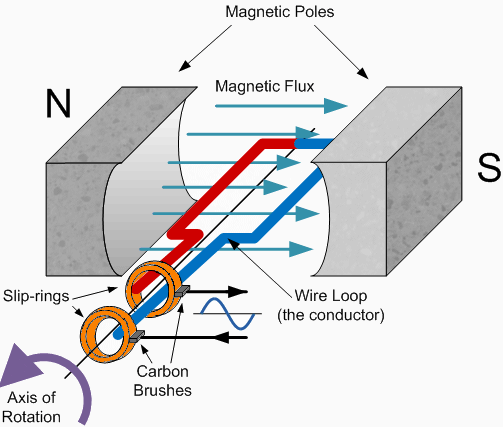
Mechanical kinetic energy is converted into electrical energy
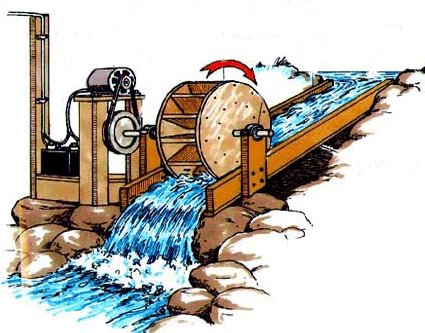
Photovoltaics
Radiation energy is converted into electrical energy
The photoelectric effect

Electrical Resistance

For a given pressure, more water passes through a large pipe than a small one
Similarly, for a given voltage, more electric current passes through a large-diameter wire than a small-diameter one

Less resistance
More resistance
Electrical Resistance

Voltage Source
A simple hydraulic circuit is analogous to an electric circuit
Ohm's Law
The Current flow is proportional to the Voltage and inversely proportional to the Resistance
Units:
A potential difference of 1 volt across a circuit with a resistance of 1 ohm will produce a current of 1 ampere
Ohm (symbol is Ω) is unit of resistance
Checkpoint 2
A typical light bulb has a resistance of about 100 ohms. What is the current flow across a light bulb when connected to an electric socket providing 120 volts?
Checkpoint 3
If the resistance across your body is 1000 times greater than a typical light bulb, how much current would flow trough your body if you touch an electric socket? (current = 1.2 amps for the bulb)

Electric Shock
Ohmic Heating
Flowing electrons strike atoms in a conductor, heating the material. For a given voltage the higher the resistance the higher the heating


Toaster
Oven
Light bulb
Fuses and Circuit Breakers
A fuse is designed to melt (due to ohmic heating) when current is too large
Circuit breaker does same job without needing replacement; flip the switch to reconnect


Direct vs. Alternating Currents

Direct current (DC) is current that flows in only one direction
Alternating current (AC) is current that flows back and forth with alternating direction


Electric Power
Units:
Checkpoint 4
A kilowatt is 1000 watts, and a kilowatt-hour is the amount of energy consumed in one hour at the rate of 1 kilowatt. If electric energy costs 20 cents per kilowatt-hour, what does it cost to operate a 100 watt light bulb for 10 hours?
100 watts x 10 hours x 20 cents/kilowatt-hour
= 1 kilowatt-hour x 20 cents/kilowatt-hour)
= 20 cents
The End
Electric Current
The instrument to measure current is called an Ammeter

Due to charge conservation, same current into and out of light bulb
Capacitors
Capacitors are used to store electric potential energy

They produce a short lived current while discharging

Electricity - Physics 10
By Miguel Rocha
Electricity - Physics 10
Physics 1 - Week 9 - Chapters 22-23
- 836
